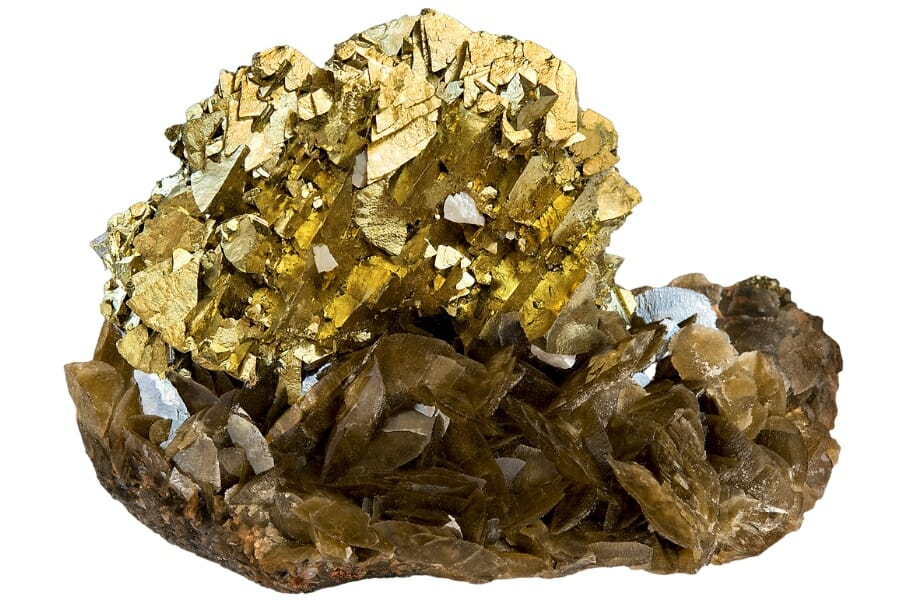Chalcopyrite and pyrite are two minerals that can look a lot alike. Because of their shiny, gold-like color, it’s no wonder that many people, even those who know a bit about rocks, sometimes mix them up.
Both often boast a dazzling metallic sheen, which can lead even the most trained eyes to confuse one for the other occasionally.
But other than how they look, these minerals are all different. Each has its own set of properties and is used for different things.
From their roles in the industry to where they can be found worldwide, chalcopyrite and pyrite have different stories to tell. There have been times when they were mistaken for each other, but in the end, their differences and contributions make them stand out.
This article will discuss how you can easily distinguish their differences. We’ll compare and contrast these two gems, and you should be able to tell them apart!
Chalcopyrite vs. Pyrite – The Major Differences
We’ll start by discussing their differences. They also share some similarities, but these differences stand out the most when put side by side.
Appearance – Pyrite forms in a cubic crystal
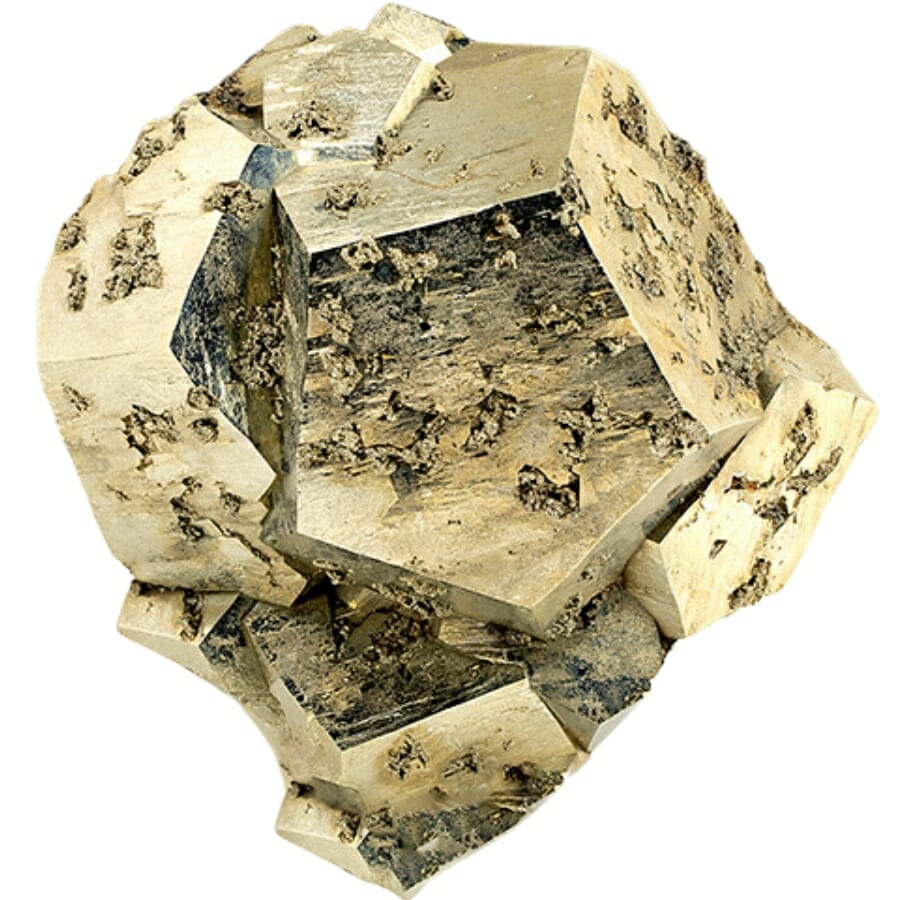
Chalcopyrite is dazzling yellow, as you may have observed if you’ve ever seen a piece of it. It can also occasionally feature touches of blues, purples, or greens, which give it a unique sheen. This dazzle may resemble a peacock’s feather when it catches the light.
Pyrite, on the other hand, possesses a certain allure. Frequently called “fool’s gold,” it has a dazzling, uniform yellow sheen. It’s interesting because it often takes on geometric shapes.
Occasionally, it may resemble tiny, perfect cubes or other orderly geometric shapes. Pyrite can appear to be tiny gold nuggets due to their forms.
Both chalcopyrite and pyrite have that golden sheen. Still, chalcopyrite may remind you of a peacock feather because of its shifting colors, while pyrite stands out because of its unique shapes and bright, uniform color that resembles gold.
Chemical Composition – Chalcopyrite is a copper iron sulfide
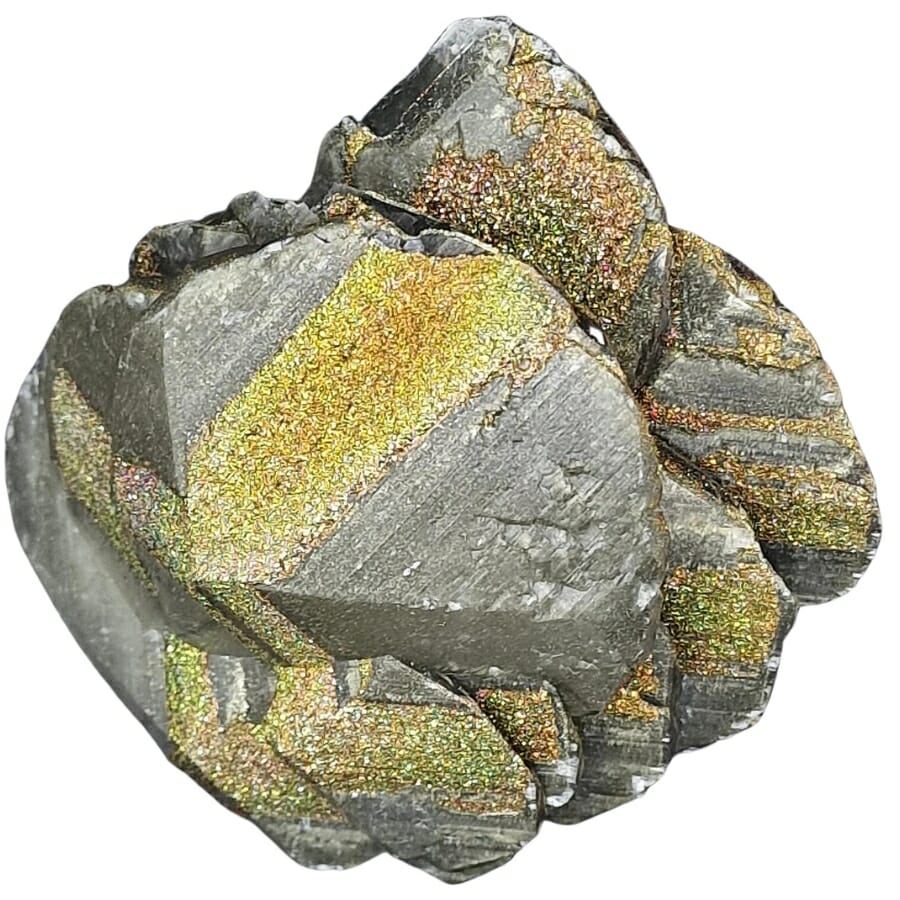
When we talk about minerals, we’re talking about specific combinations of elements from the periodic table. Minerals are made up of different parts, just like a cake recipe has other things that go into it.
Let’s look at what “ingredients” or elements chalcopyrite and pyrite are made of.
Chalcopyrite is a fun mix of copper, iron, and sulfur. Imagine mixing one scoop of copper, one scoop of iron, and two scoops of sulfur. So, that’s how you make chalcopyrite!
Scientists have a way of writing this down with symbols, and the formula for chalcopyrite is CuFeS2.
Let’s take a look at pyrite. Pyrite’s composition is simpler. It’s only made of iron and sulfur. There are two pieces of sulfur for every piece of iron. So, FeS2 is what it is made of. Pyrite is often called “iron sulfide” because of this.
Color – Pyrite is a consistent pale brass-yellow
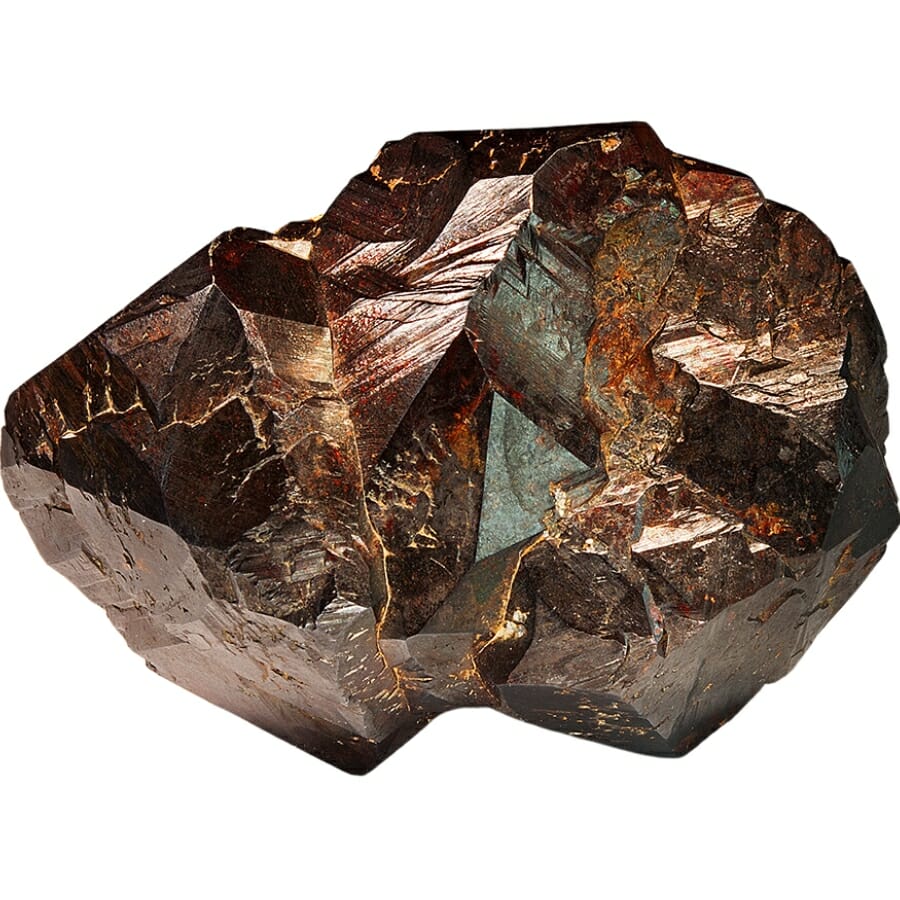
Chalcopyrite has a cool thing that it can do. At first, it looks like gold because it has a brassy yellow shine. But that’s not all! Chalcopyrite can look purple, blue, or green if you look at it from different angles or if it has been out in the air for a while.
It’s like playing with one of those pencils that changes colors. Chalcopyrite has a very unique look because of its many colors. It looks like a small rainbow inside a rock.
Now, let’s look at pyrite. Pyrite doesn’t complicate things. It’s known for its bright gold color, which doesn’t change much. Some people call it “fool’s gold” because of this.
It doesn’t have a lot of colors like chalcopyrite, but it looks very much like a piece of gold treasure.
Chalcopyrite can change colors like a gem, while pyrite is classic golden. Both are pretty in their ways, but the colors tell different stories.
Density – Chalcopyrite has a lower density
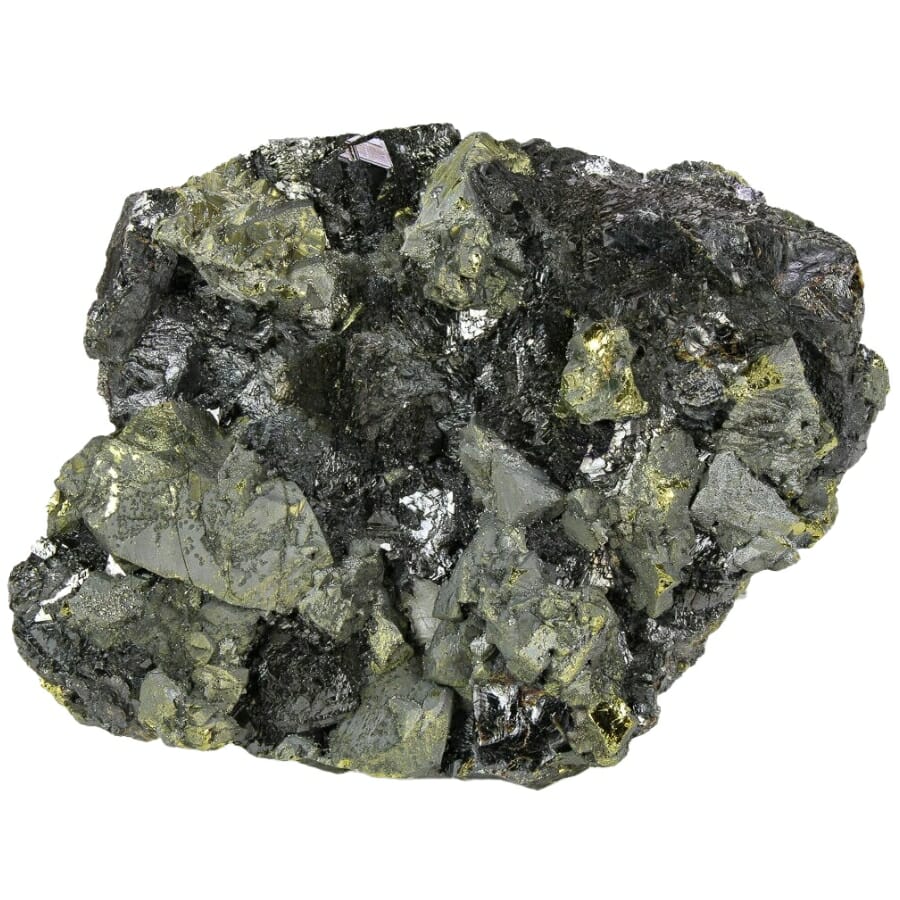
Density might sound like a fancy word, but it just means how “packed together” or “heavy” something feels for its size.
Let’s talk about how heavy chalcopyrite and pyrite are. Chalcopyrite is kind of like the backpack with a few notebooks in it. It’s not really heavy for how big it is. It’s between 4.1 and 4.3 on the density scale.
Imagine you have a small box that can only hold one kind of mineral. If you put chalcopyrite in the box, it would weigh about 4.1 to 4.3 times as much as water.
Pyrite, on the other hand, is like the backpack full of books. It’s more solid. If you put pyrite in the same box, it would weigh about 5 times as much as the water in the box.
In a nutshell, pyrite would win a contest to see which is denser between chalcopyrite and pyrite. It’s just bigger and heavier than chalcopyrite for its size.
Hardness – Pyrite is harder
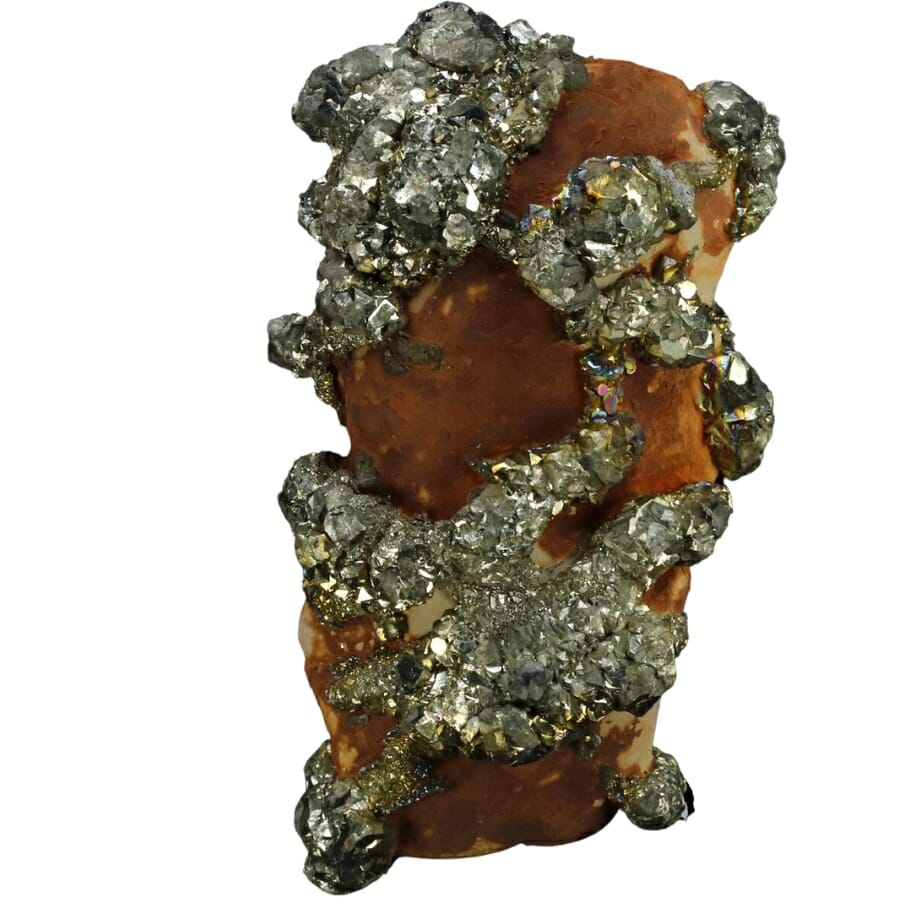
Each mineral has its own unique set of properties, just like every person has unique qualities. The hardness of a mineral is an important thing to look at. It’s like asking, “How easy is it to scratch this rock?”
Chalcopyrite scores between 3.5 and 4 on the Mohs scale, which measures how hard something is. This means it’s not too hard. To give you an idea of how hard chalcopyrite is, a typical steel nail, which has a hardness of about 4.5, can easily scratch it.
Pyrite is hard, with a 6 to 6.5 on the Mohs scale. This makes it hard for many other minerals to scratch it. A piece of pyrite can easily scratch chalcopyrite without getting scratched itself during a scratch test.
Pyrite is easy to tell apart from real gold, which is softer and has a Mohs hardness of 2.5 to 3 because of how hard it is and how much it looks like gold.
There is a big difference between how hard chalcopyrite and pyrite are. This difference has a big effect on how these minerals look and wear over time.
Price – Chalcopyrite is more valuable
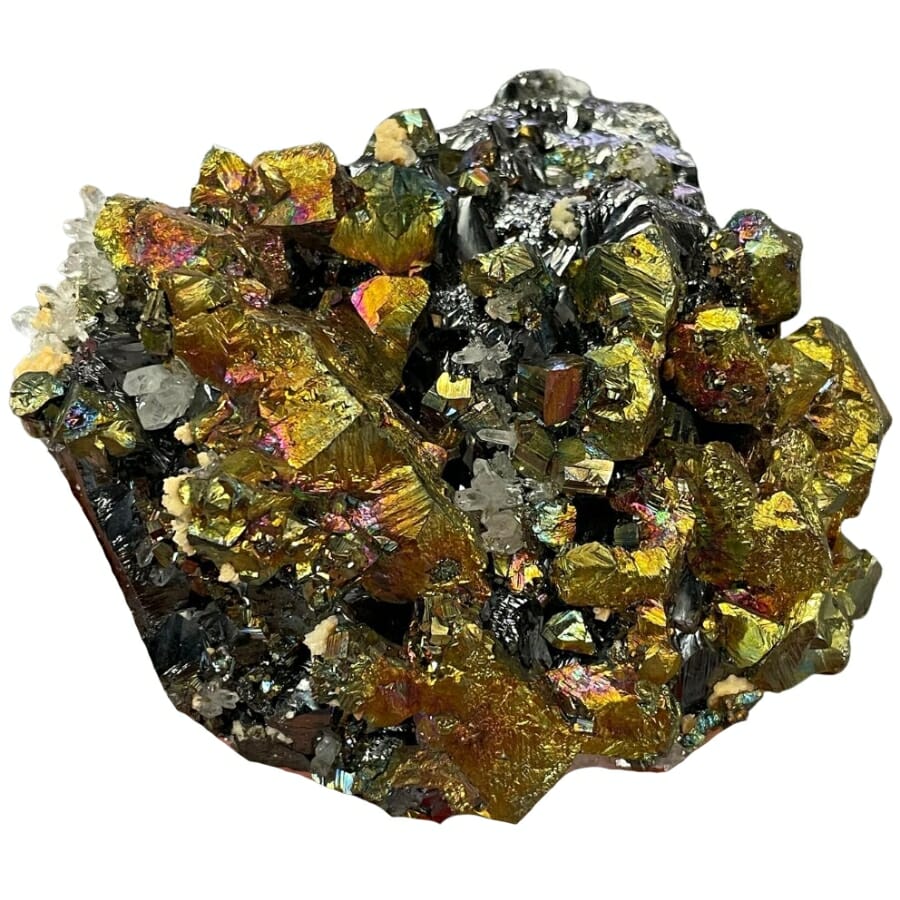
Minerals, like chalcopyrite and pyrite, are priced and traded on the market based on several factors, such as demand, supply, extraction costs, and how they are used.
Copper is what gives chalcopyrite its main value. Chalcopyrite is an important source of copper because it’s one of the most common copper minerals. Copper is a very useful metal that can be used in many ways.
It’s used in electrical wiring, plumbing, roofing, and making coins and sculptures. Copper is a key part of modern infrastructure, so the global copper market affects the price of chalcopyrite.
This is because copper is used all over the world. When the price of copper increases, so does the price of chalcopyrite, and vice versa. The price of chalcopyrite is also affected by the costs of mining and processing it, the quality of the ore, and the amount of copper that can be extracted from it.
Pyrite is easy to find but is usually less in demand than chalcopyrite’s copper. Because of this and the fact that there are other ways to get sulfur, pyrite is usually less expensive than chalcopyrite.
But it’s important to note that collectors and fans will pay more for examples of either minerals that are beautiful or have interesting crystal structures.
For example, a perfectly shaped cube of pyrite or a piece of chalcopyrite with brilliant iridescence can be sold for much more than the value of the raw material.
Both chalcopyrite and pyrite have their markets, but chalcopyrite is usually more expensive because it has more copper and is in high demand worldwide.
Even though there is a lot of it, the value of pyrite is cheaper because it has specific industrial uses, and there are other places to get sulfur.
Streak – Pyrite has a black streak
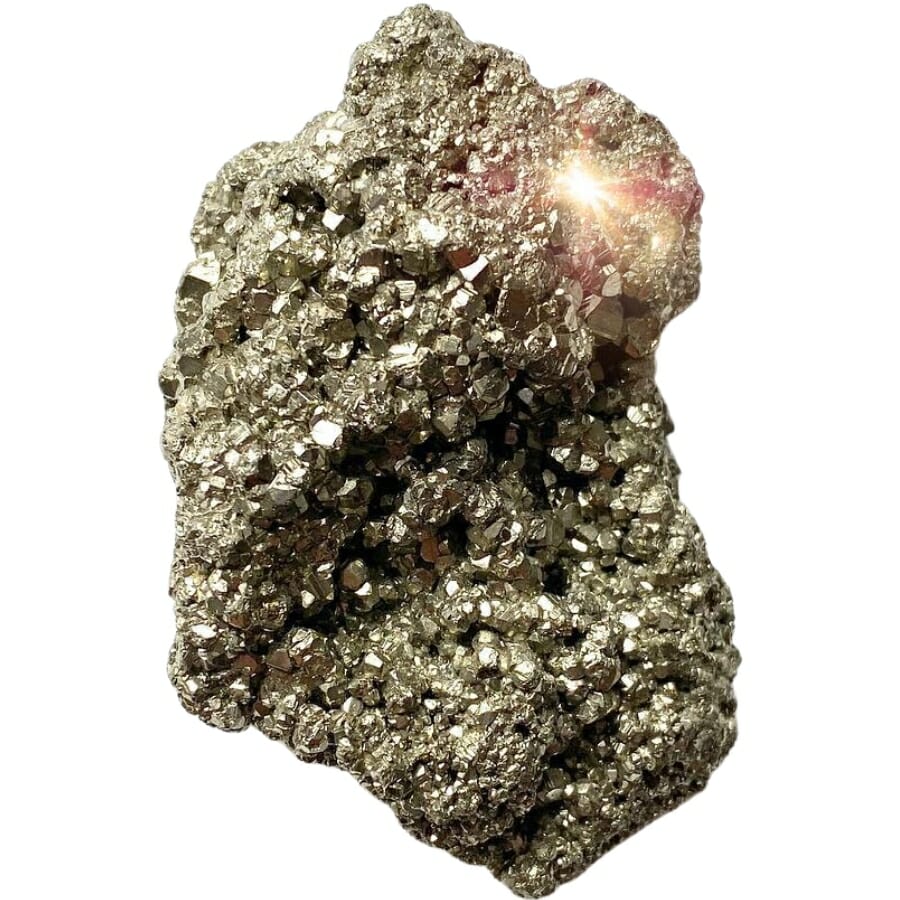
The streak of a mineral refers to the color of the powder it leaves behind when it’s rubbed against a rough surface, typically a white porcelain plate called a streak plate.
If you look at the streak of chalcopyrite, it is greenish-black. This makes it stand out and can help you tell it apart from other minerals that look similar but have a different streak.
Even if the chalcopyrite piece is tarnished and turns purple, blue, or green, the greenish-black streak won’t change.
Even though it looks like gold metal, pyrite leaves a black mark on a streak plate. This is a critical way to tell them apart. People might mistake pyrite for gold because it looks golden, but real gold leaves a golden-yellow streak, while pyrite leaves a clear black streak.
The difference in streak between chalcopyrite and pyrite is essential, especially in the field or when there are no other ways to tell them apart. A simple streak test makes it easy to tell the difference between the two minerals.
It’s a hands-on method that doesn’t require much equipment. Both professional geologists and amateur rock hunters can use it.
Pyrite vs. Chalcopyrite – The Similarities
After discussing how pyrite and chalcopyrite are different, we’ll discuss how they’re the same. Even though they have more things in common than differences, it’s still important to know these characteristics.
Cleavage – Both chalcopyrite and pyrite have no cleavage
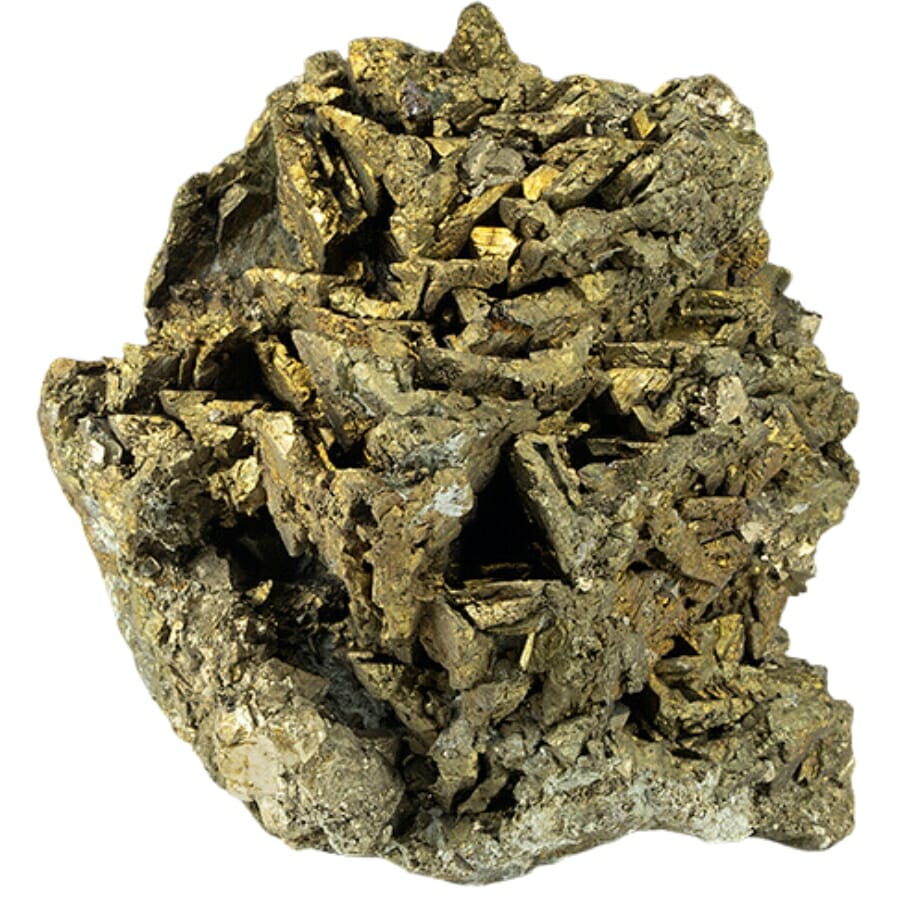
Cleavage is the term for how minerals tend to break along flat planes. This pattern is caused by the way the atoms in the mineral are arranged and the strength of the bonds that hold them together.
When closely examined, chalcopyrite and pyrite tend to have similar cleavage properties. In particular, neither of these minerals is known to have very clear cleavage planes.
They don’t split neatly along flat surfaces but tend to break. Fracturing means the mineral breaks in a way that isn’t straight. Instead, the pieces are more jagged or irregular.
The cracks in both chalcopyrite and pyrite are called “conchoidal.” This word describes a break that leaves curved, shell-like pieces, like when glass breaks.
If you took a hammer and gently hit a piece of pyrite or chalcopyrite, the piece would probably break unevenly or curvedly.
Their similar cleavage (or lack thereof) can help you figure out what they are, especially if they look like other minerals with strong cleavage planes.
Even though these two minerals are different in many ways, they have similar cleavage patterns. This shows that not all minerals break or split in predictable, flat ways.
Conductivity – Pyrite and chalcopyrite can conduct electricity
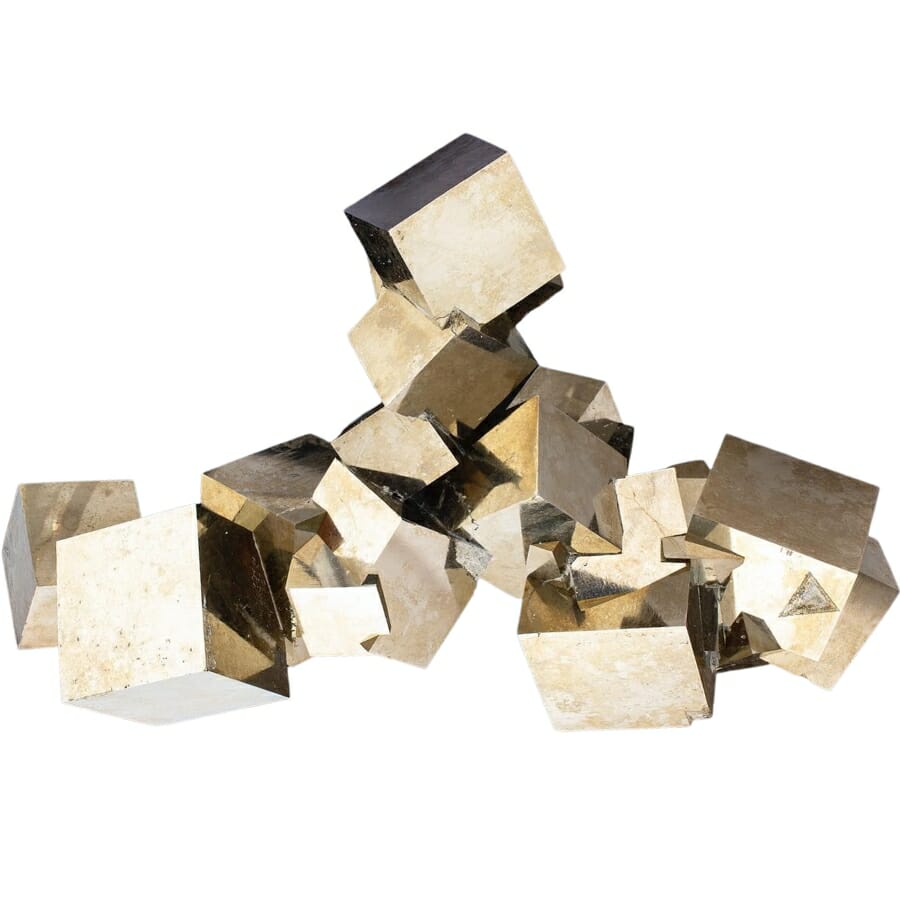
Chalcopyrite and pyrite are sulfide minerals, which comprise sulfur and metals. Chalcopyrite is mostly iron and copper, while pyrite is mostly iron. Their ability to conduct electricity is affected by the fact that they are made of metal.
Chalcopyrite has a high level of conductivity because it has copper in it. Copper is well-known for its ability to carry electricity. It’s used a lot in electrical wiring and other parts because it doesn’t get in the way of electricity.
Since chalcopyrite has a lot of copper, it has properties that allow it to conduct electricity.
In the same way, pyrite, which is mainly made of iron, also conducts electricity, though not as well as chalcopyrite. Copper is a better conductor than iron, but iron still lets electricity flow through it.
If you put electricity through a pyrite sample, the electricity will flow through the mineral, proving it is conductive.
Electrical conductivity is something that both chalcopyrite and pyrite have in common, though the amount of conductivity can vary depending on the metals they are made of.
Their ability to conduct electricity shows how their metallic parts affect them and highlights an important thing they have in common among their other differences.
Formation – Chalcopyrite and pyrite have no cleavage
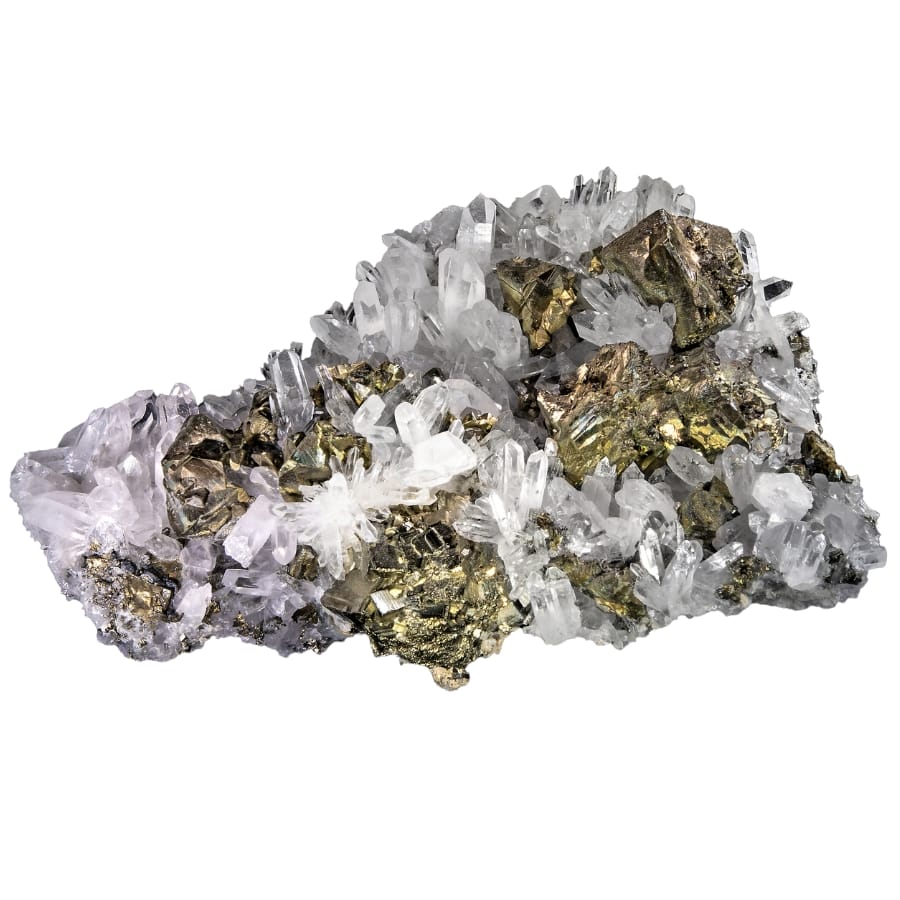
Pyrite and chalcopyrite are both types of sulfide minerals. This means that they come from places with a lot of sulfur.
Hydrothermal activities, in which hot, mineral-rich water moves through cracks and holes in the Earth’s crust, are often linked to these places.
As this water cools and its chemicals change, minerals like sulfides like chalcopyrite and pyrite form crystals and settle to the bottom.
Minerals like these often form in or near ore deposits, especially those with many copper, gold, or other valuable metals.
When metal ions mix with sulfur, which is made easier by the hot water in hydrothermal systems, chalcopyrite, pyrite, or both are often formed. Chalcopyrite and pyrite can be found in sedimentary rock layers and places created by hot springs.
When organic matter in these rocks breaks down without oxygen, it gives off sulfur. This sulfur can then combine with iron or copper in the area to make pyrite or chalcopyrite.
Fluorescence – Neither pyrite nor chalcopyrite exhibits fluorescence
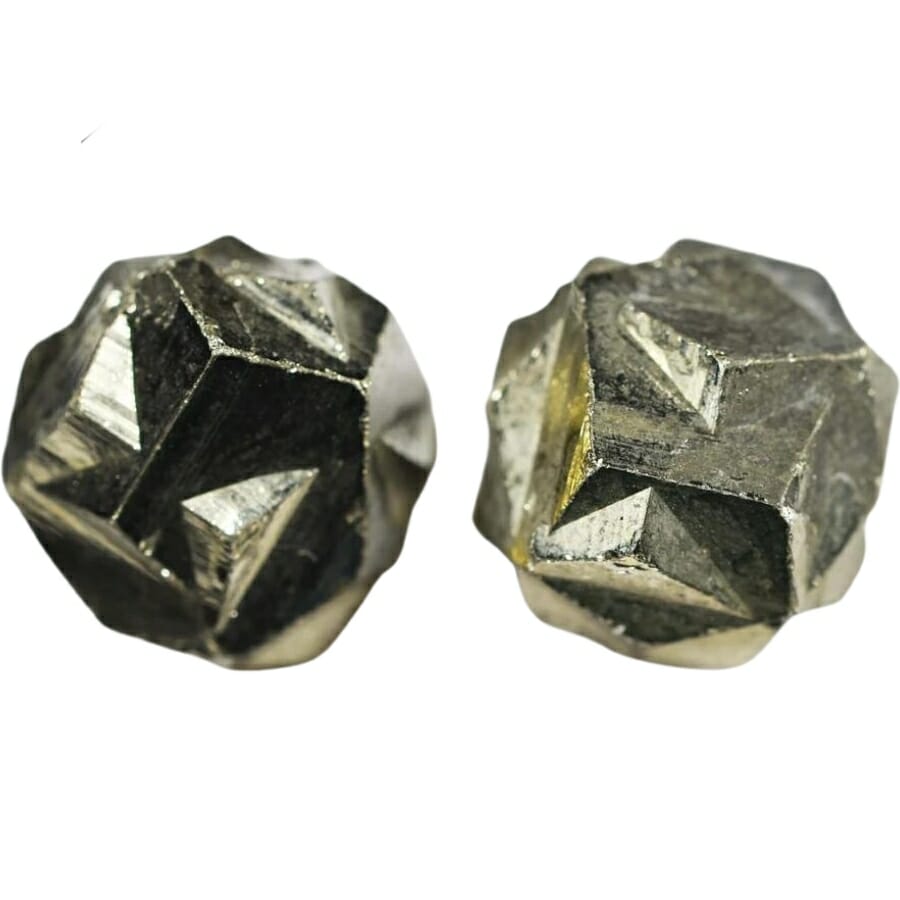
When minerals are exposed to ultraviolet (UV) light, they can glow or give off light. This is called fluorescence.
This unique property is fascinating to geologists and mineral lovers because it gives them another way to look at and enjoy these natural wonders. Under ultraviolet light, some interesting similarities exist between how chalcopyrite and pyrite act.
But it’s important to remember that trace elements or impurities can sometimes change the fluorescence of a mineral.
This means that if a piece of chalcopyrite or pyrite has certain impurities, it might sometimes have a slight fluorescence. But as a rule, neither of these minerals is recognized for this property.
Their non-fluorescent or weakly fluorescent behavior is one of the few things they share, even though they have many other differences.
Chalcopyrite and pyrite aren’t as brightly fluorescent as some other minerals, so they don’t get as much attention in this area of mineralogy.
Location – Both chalcopyrite and pyrite are widespread worldwide
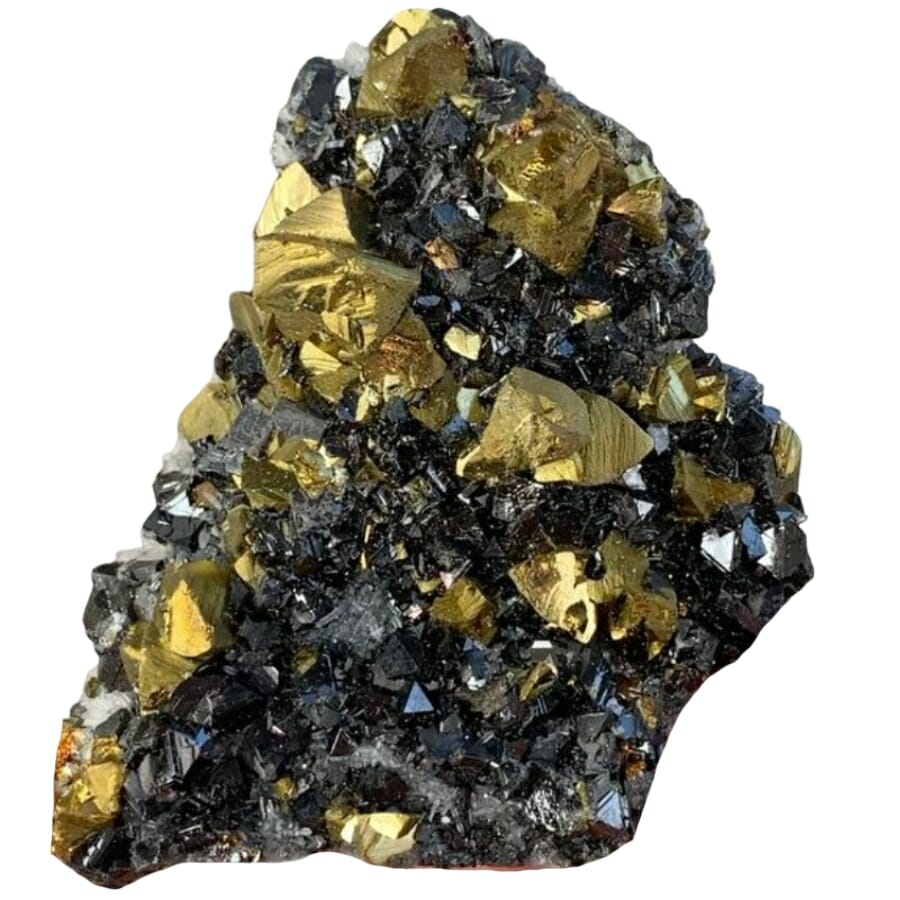
Hydrothermal deposits are one of the best places to find chalcopyrite and pyrite. These are places where hot, mineral-rich water flows through cracks in the Earth’s crust.
The history of these rocks can be told by where they are found. Rockhounding is a fascinating activity, and these are the best places for rockhounding to find chalcopyrite and pyrite.
As the water cools, it leaves behind minerals. Hydrothermal systems are often linked to volcanic activity and areas with geothermal energy. They can lead to the formation of large ore deposits.
Copper’s main ore, chalcopyrite, and pyrite, are often found in these places. They are so closely linked in this area that finding one often means the other isn’t too far away.
Both minerals can also be found in rocks that are made of sediments. These rocks were made when minerals and organic matter built up on the surface of the Earth.
In places without oxygen, when organic matter breaks down, it can release sulfur. This sulfur can then combine with the metals in the area to make sulfide minerals, such as pyrite and chalcopyrite.
Check out our guide on how to find crystals near you to increase your chances of finding chalcopyrite and pyrite.
In essence, the fact that chalcopyrite and pyrite are often found in the same geologic environments shows that they were formed similarly and play related roles in the Earth’s mineral tapestry.
Luster – Pyrite and chalcopyrite both have a metallic luster
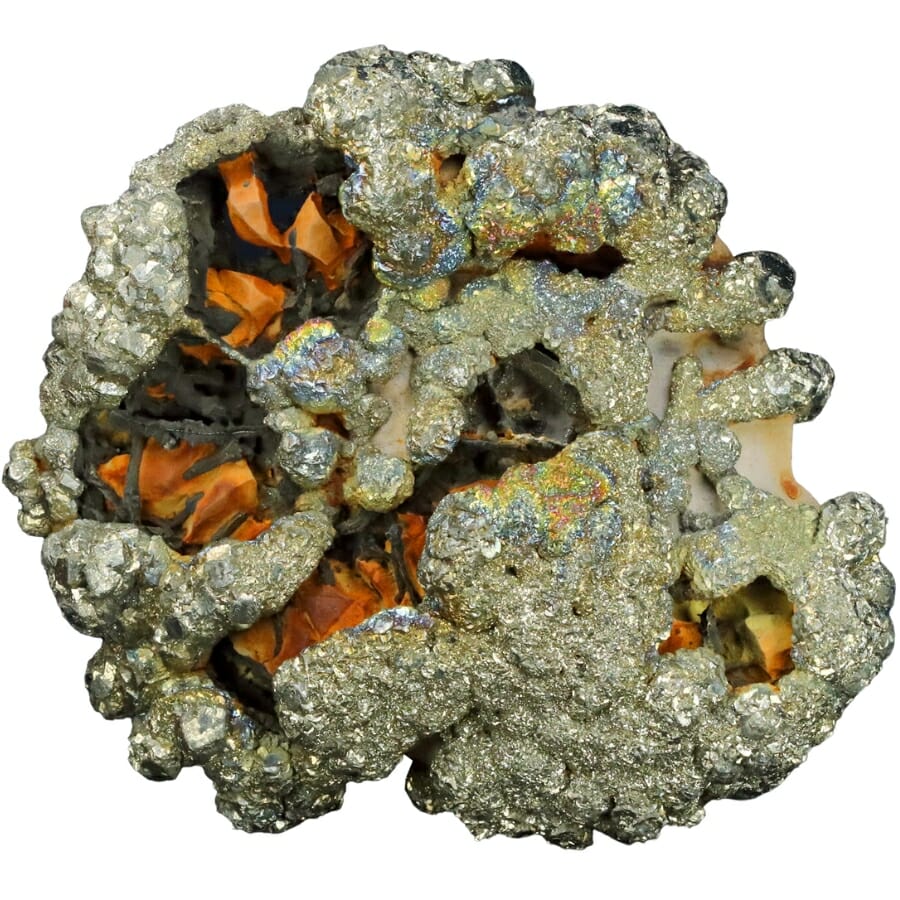
Chalcopyrite and pyrite are both known for the way they shine like metal. This means that their surfaces reflect light in a way that is similar to how gold and silver reflect light.
When broken or cut, they both have a bright, shiny look, which makes it easy for people who don’t know their differences to mistake them for more valuable metals.
It can look shiny and bright and easily reflect light, making it look polished and almost like a mirror.
The metallic luster shared by chalcopyrite and pyrite is a defining similarity between them. This shared trait makes them visually captivating and often leads to their confusion with other, more valuable metals.
Their lustrous appearances stand out in the mineral kingdom, drawing attention from collectors, geologists, and those fascinated by the shiny allure of the Earth’s treasures.
Magnetism- Neither chalcopyrite nor pyrite is magnetic
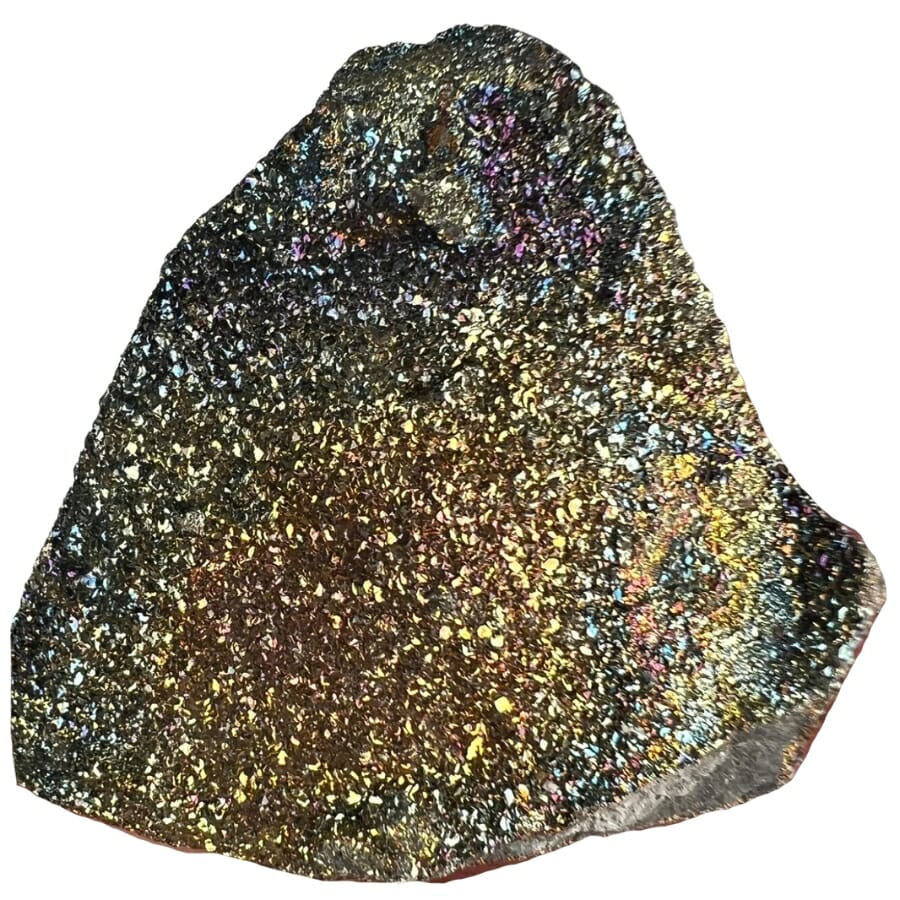
Magnetism is a fascinating property of minerals that describes how they interact with magnetic fields. Regarding how they respond to magnetism, chalcopyrite and pyrite are alike.
Both chalcopyrite and pyrite are not magnetic in and of themselves. This means they don’t act like magnets like other minerals or materials do.
If you put a piece of chalcopyrite or pyrite next to a regular magnet, neither mineral would be strongly drawn to the magnet. This is different from minerals like magnetite, which, as the name suggests, acts like a magnet.
But it’s interesting to know that pyrite can sometimes have a weak magnetic property after being heated. This is called “thermoremanent magnetization.”
Pyrite can become slightly magnetic if heated to a certain temperature and then left to cool in a magnetic field. But this induced magnetism is not a normal property of pyrite. Instead, it is caused by certain conditions.
On the other hand, Chalcopyrite remains largely non-magnetic even after undergoing such treatments. Its interaction with magnetic fields is minimal, aligning it with pyrite in its natural state.
This non-magnetic behavior is a shared characteristic that can be used to differentiate them from other minerals but not necessarily from each other.
The Easiest Ways To Tell Chalcopyrite and Pyrite Apart
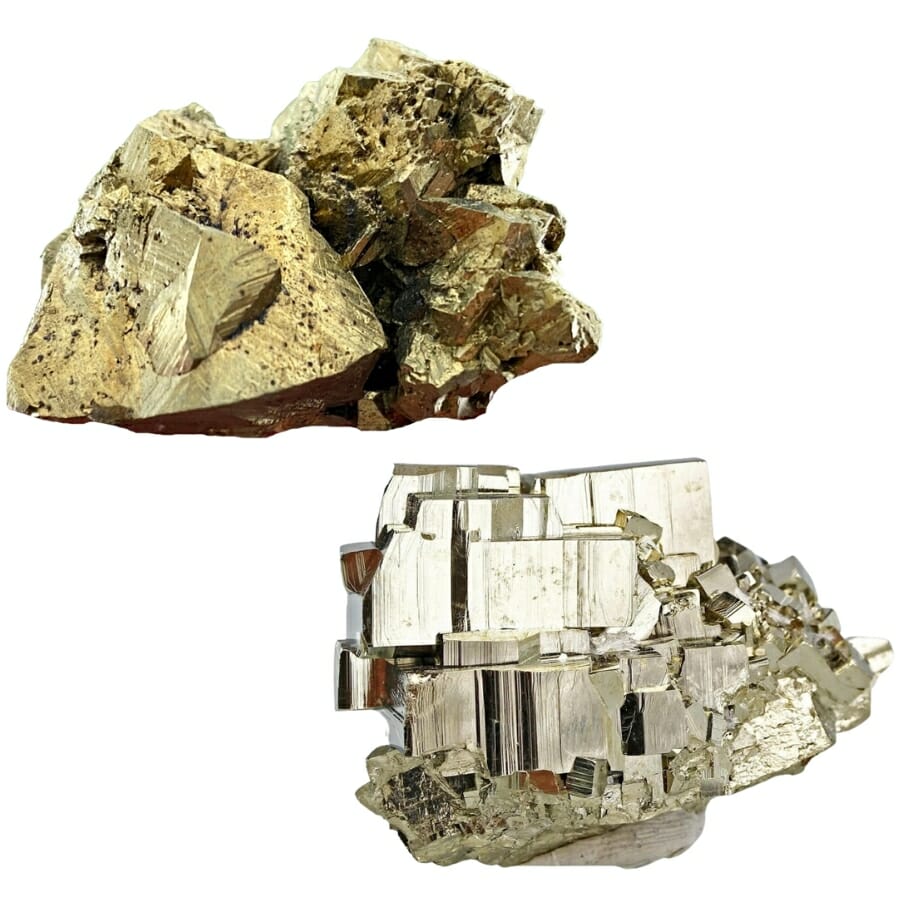
It can be easy to tell the difference between red diamond and ruby if you look at more than one characteristic. It’s fun to try to figure out what makes them different. Even though they have some things in common, you should watch out for a few key differences.
The colors they show
Pyrite is also called “fool’s gold.” That’s because it has a shiny gold color that could easily be mistaken for real gold. If you ever find a rock that looks like gold, it might be pyrite.
On the other hand, chalcopyrite is a little different. It can also be gold, but it usually has shades of green, blue, or purple, especially if it’s been in the air for a while. This is because chalcopyrite can tarnish, which changes its color.
Scratch to test hardness
This is about how easy it is to scratch a mineral. Chalcopyrite is not as hard as pyrite. Try as you might, you wouldn’t be able to scratch pyrite with a nail.
Chalcopyrite, though? It’s not as hard. That means a nail could scratch or leave a mark on it. So, testing the hardness can help you figure out what kind of mineral you’re looking at.
The streak they leave behind
For the streak test, the mineral is rubbed against a piece of unglazed porcelain like a white tile. Pyrite leaves a greenish-black mark when rubbed against this tile.
And, chalcopyrite? It leaves behind a black mark. This is a neat trick because even if two minerals look the same on the outside, they can leave very different streaks.

